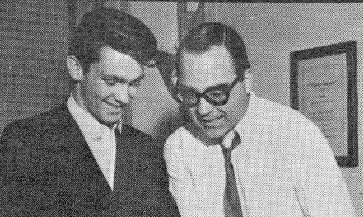 Schroeder's first success was a young singer/songwriter named Gene Pitney. Pitney was born in
Hartford and grew up in nearby Rockville, Connecticut, where he had a high-school band, Gene Pitney
and the Genials. By the time he was out of high school, he was attending electronics school in Hartford
while he was singing and writing songs in his "off hours." He recorded some sides backed by Hartford's
R&B vocal group the Embers, and in 1959 formed a duo with Ginny Arnell, billing themselves as "Jamie
& Jane." By 1960, he was doing solo recordings, for example, as Billy Bryan. Mostly, though, he was
down in New York City shopping demos around. Aaron Schroeder saw a lot of potential in Pitney, and
signed him to Schroeder's publishing company, January Music, as well as his new Musicor label, and
also to a personal management contract. In the fall of 1960, Schroeder and Pitney (under his mother's
name as a pseudonym), wrote a song called "Rubber Ball" which Bobby Vee recorded [Liberty 55287]
and it went to #6 nationally. Another of Pitney's demos, "Hello Mary Lou," would reach Ricky Nelson,
who would likewise make top-10 with the song in the spring of 1961 [Imperial 5741]. Another ("Today's
Teardrops") was picked up by Roy Orbison, and recorded as the B-side of his 1960 hit "Blue Angel"
[Monument 425]. Still another of Pitney's demos was "(I Wanna) Love My Life Away," with Pitney playing
all the instruments and overtracking multiple vocal parts under a ton of reverb. This demo (Pitney didn't
have lots of money to hire studio musicians) sounded like an early "Wall of Sound" recording. Although
Pitney had considered it just a demo and sent it in to Schroeder, Schroeder decided it was good enough
to release as is, and did so as the second single on his new label [Musicor 1002]. It reached #39 on the
charts.
Schroeder's first success was a young singer/songwriter named Gene Pitney. Pitney was born in
Hartford and grew up in nearby Rockville, Connecticut, where he had a high-school band, Gene Pitney
and the Genials. By the time he was out of high school, he was attending electronics school in Hartford
while he was singing and writing songs in his "off hours." He recorded some sides backed by Hartford's
R&B vocal group the Embers, and in 1959 formed a duo with Ginny Arnell, billing themselves as "Jamie
& Jane." By 1960, he was doing solo recordings, for example, as Billy Bryan. Mostly, though, he was
down in New York City shopping demos around. Aaron Schroeder saw a lot of potential in Pitney, and
signed him to Schroeder's publishing company, January Music, as well as his new Musicor label, and
also to a personal management contract. In the fall of 1960, Schroeder and Pitney (under his mother's
name as a pseudonym), wrote a song called "Rubber Ball" which Bobby Vee recorded [Liberty 55287]
and it went to #6 nationally. Another of Pitney's demos, "Hello Mary Lou," would reach Ricky Nelson,
who would likewise make top-10 with the song in the spring of 1961 [Imperial 5741]. Another ("Today's
Teardrops") was picked up by Roy Orbison, and recorded as the B-side of his 1960 hit "Blue Angel"
[Monument 425]. Still another of Pitney's demos was "(I Wanna) Love My Life Away," with Pitney playing
all the instruments and overtracking multiple vocal parts under a ton of reverb. This demo (Pitney didn't
have lots of money to hire studio musicians) sounded like an early "Wall of Sound" recording. Although
Pitney had considered it just a demo and sent it in to Schroeder, Schroeder decided it was good enough
to release as is, and did so as the second single on his new label [Musicor 1002]. It reached #39 on the
charts.
 This record was possibly one of the influences for Phil Spector's "Wall of Sound" concept, since Spector
himself was brought in after "Love My Life Away" to work as a producer for Pitney. Nothing that Spector
had produced before this had much indication of the future "Wall of Sound" that would become Spector's
trademark. This collaboration resulted in at least two chart hits. Spector produced Pitney's next hit,
"Every Breath I Take" [Musicor 1011, #42], but Pitney also wrote a song for one of the groups on
Spector's own Philles label, the Crystals' "He's A Rebel" [Philles 106, actually recorded by the
Blossoms], which reached #1 in 1962. "Every Breath I Take" is often named as the first of Spector's
"Wall of Sound" records. It was recorded in a marathon studio session where Pitney's voice was
essentially gone by the end, so he had to sing the last few lines in a high falsetto, which ended up on the
single. The session reportedly cost some $13,000, and the record made a slightly worse showing on the
charts than Pitney's own recording of "(I Wanna) Love My Life Away," which reportedly cost about $30.
Schroeder, given the bill for the session, never again used Spector as a producer. Although the
Spector/Pitney studio connection was short-lived, Pitney and Spector remained friends, and were heard
together playing piano and maracas, respectively, on the Rolling Stones' recording, "Little By Little" in
1964.
This record was possibly one of the influences for Phil Spector's "Wall of Sound" concept, since Spector
himself was brought in after "Love My Life Away" to work as a producer for Pitney. Nothing that Spector
had produced before this had much indication of the future "Wall of Sound" that would become Spector's
trademark. This collaboration resulted in at least two chart hits. Spector produced Pitney's next hit,
"Every Breath I Take" [Musicor 1011, #42], but Pitney also wrote a song for one of the groups on
Spector's own Philles label, the Crystals' "He's A Rebel" [Philles 106, actually recorded by the
Blossoms], which reached #1 in 1962. "Every Breath I Take" is often named as the first of Spector's
"Wall of Sound" records. It was recorded in a marathon studio session where Pitney's voice was
essentially gone by the end, so he had to sing the last few lines in a high falsetto, which ended up on the
single. The session reportedly cost some $13,000, and the record made a slightly worse showing on the
charts than Pitney's own recording of "(I Wanna) Love My Life Away," which reportedly cost about $30.
Schroeder, given the bill for the session, never again used Spector as a producer. Although the
Spector/Pitney studio connection was short-lived, Pitney and Spector remained friends, and were heard
together playing piano and maracas, respectively, on the Rolling Stones' recording, "Little By Little" in
1964.
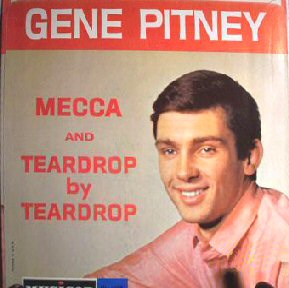 Pitney's break as a singer came when he was given a Dimitri Tiomkin-Ned Washington movie theme
song to do, "Town Without Pity" [Musicor 1009]. The movie came out well before the song, and fairly
bombed. When the song came out and made #13 on the charts, there was renewed interest in the
movie, and it did much better. Observing how Gene Pitney's single helped sell the movie, he was next
given the theme from a John Ford western, "The Man Who Shot Liberty Valance," starring Jimmy
Stewart and John Wayne. Unfortunately, the picture was released early, and there was not enough time
to get Gene's song into the movie itself, but the single "(The Man Who Shot) Liberty Valance" [Musicor
1020] itself shot to #4, the highest showing yet for Pitney and Musicor.
Pitney's break as a singer came when he was given a Dimitri Tiomkin-Ned Washington movie theme
song to do, "Town Without Pity" [Musicor 1009]. The movie came out well before the song, and fairly
bombed. When the song came out and made #13 on the charts, there was renewed interest in the
movie, and it did much better. Observing how Gene Pitney's single helped sell the movie, he was next
given the theme from a John Ford western, "The Man Who Shot Liberty Valance," starring Jimmy
Stewart and John Wayne. Unfortunately, the picture was released early, and there was not enough time
to get Gene's song into the movie itself, but the single "(The Man Who Shot) Liberty Valance" [Musicor
1020] itself shot to #4, the highest showing yet for Pitney and Musicor.
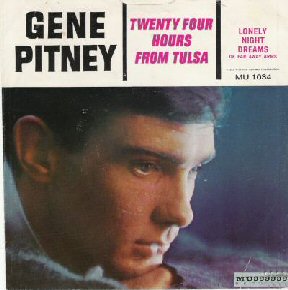 Schroeder was always looking for good songs to supplement Pitney's own songs. He recommended
songs by Goffin-King, Mann-Weil, and the then not-that-well-known duo of Burt Bacharach and Hal
David. A score of hits followed, including "Only Love Can Break a Heart" (#2), "Half Heaven-Half
Heartache" (#12), "Mecca" (#12), "True Love Never Runs Smooth" (#21), "Twenty-Four Hours from
Tulsa" (#17), "That Girl Belongs to Yesterday" (#49, the first US hit written by Rolling Stones' Mick
Jagger and Keith Richards), "It Hurts to Be in Love" (#7), "I'm Gonna Be Strong" (#9), "I Must Be Seeing
Things" (#31), "Last Chance to Turn Around" (#13), "Looking Through The Eyes Of Love" (#28),
"Princess in Rags" (#37), "Backstage" (#25), "Just One Smile" (#64, but a hit in certain cities), and
"She's
a Heartbreaker" (#16, written by labelmate Charlie Foxx).
Schroeder was always looking for good songs to supplement Pitney's own songs. He recommended
songs by Goffin-King, Mann-Weil, and the then not-that-well-known duo of Burt Bacharach and Hal
David. A score of hits followed, including "Only Love Can Break a Heart" (#2), "Half Heaven-Half
Heartache" (#12), "Mecca" (#12), "True Love Never Runs Smooth" (#21), "Twenty-Four Hours from
Tulsa" (#17), "That Girl Belongs to Yesterday" (#49, the first US hit written by Rolling Stones' Mick
Jagger and Keith Richards), "It Hurts to Be in Love" (#7), "I'm Gonna Be Strong" (#9), "I Must Be Seeing
Things" (#31), "Last Chance to Turn Around" (#13), "Looking Through The Eyes Of Love" (#28),
"Princess in Rags" (#37), "Backstage" (#25), "Just One Smile" (#64, but a hit in certain cities), and
"She's
a Heartbreaker" (#16, written by labelmate Charlie Foxx).
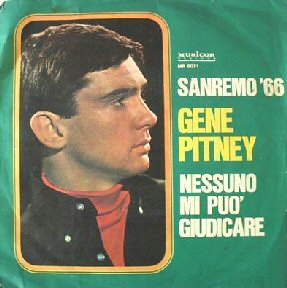 In fact, Gene Pitney was the biggest and best-selling star Musicor ever had. He spent his entire chart
career, spanning 1961-1969, with Musicor. It was difficult to categorize his records, which ranged from
rock and roll like "(I Wanna) Love My Life Away" to movie themes like "Town Without Pity" to pop like
"Only Love Can Break a Heart" to country, like the duet he did with George Jones, "I've Got Five Dollars
and It's Saturday Night" [Musicor 1066, #16 country], to the sitar-steeped rocking soul of "Heartbreaker."
He also did several albums-worth of his songs in foreign languages, both Italian and Spanish. Gene
stopped recording sometime about 1972, which would have been more of a blow to Musicor than it was
if he had continued making hits. Gene Pitney died in April, 2006. He will be remembered both as an
excellent songwriter and an unusual musical talent.
In fact, Gene Pitney was the biggest and best-selling star Musicor ever had. He spent his entire chart
career, spanning 1961-1969, with Musicor. It was difficult to categorize his records, which ranged from
rock and roll like "(I Wanna) Love My Life Away" to movie themes like "Town Without Pity" to pop like
"Only Love Can Break a Heart" to country, like the duet he did with George Jones, "I've Got Five Dollars
and It's Saturday Night" [Musicor 1066, #16 country], to the sitar-steeped rocking soul of "Heartbreaker."
He also did several albums-worth of his songs in foreign languages, both Italian and Spanish. Gene
stopped recording sometime about 1972, which would have been more of a blow to Musicor than it was
if he had continued making hits. Gene Pitney died in April, 2006. He will be remembered both as an
excellent songwriter and an unusual musical talent.
 Back in 1960, before Gene Pitney's debut single on Musicor, Schroeder had released another single, the
first single on Musicor, and it sank without a trace. It was "Sick Manny's Gym"/"Plunkin'" by Leo DeLeon
and the Musclemen, a word play on the popular "Vic Tanny's" health clubs of the day. Other than the
Gene Pitney singles, the rest of the first dozen releases were likewise forgettable. They included singles
by Chuckles Finnegan, Ernie Tucker and the Operators, the Darby Sisters, Jesse James, Jennie Lee
Lambert, and Paul Greenwood. In fact, Gene Pitney's second single, "Louisiana Mama" [Musicor 1006]
didn't chart, either. After "Every Breath I Take" and "Town Without Pity" hit, Musicor finally came up with
a non-Gene Pitney chart record in November, 1961, with Long Islander Kenny Dino's "Your Ma Said You
Cried in Your Sleep Last Night" [Musicor 1013]. Kenny Dino did his best Elvis imitation as a girl-group
sang an infectious "ba-ba-ba-ba-bah" chorus incessantly behind him, and the record made it to #24.
Back in 1960, before Gene Pitney's debut single on Musicor, Schroeder had released another single, the
first single on Musicor, and it sank without a trace. It was "Sick Manny's Gym"/"Plunkin'" by Leo DeLeon
and the Musclemen, a word play on the popular "Vic Tanny's" health clubs of the day. Other than the
Gene Pitney singles, the rest of the first dozen releases were likewise forgettable. They included singles
by Chuckles Finnegan, Ernie Tucker and the Operators, the Darby Sisters, Jesse James, Jennie Lee
Lambert, and Paul Greenwood. In fact, Gene Pitney's second single, "Louisiana Mama" [Musicor 1006]
didn't chart, either. After "Every Breath I Take" and "Town Without Pity" hit, Musicor finally came up with
a non-Gene Pitney chart record in November, 1961, with Long Islander Kenny Dino's "Your Ma Said You
Cried in Your Sleep Last Night" [Musicor 1013]. Kenny Dino did his best Elvis imitation as a girl-group
sang an infectious "ba-ba-ba-ba-bah" chorus incessantly behind him, and the record made it to #24.
 Although there were several tries at followup singles, Kenny Dino failed to repeat his success. More
Musicor stiffs ensued, records by Roger Wayne, Jimmy Radcliffe, Bob & Jerry, Bonny Brooks, Candy
Cole, the Fabulous Dinos, Reggie and the Remarkables, the Twinkles..., well, you get the idea. By the
summer of 1963, Gene Pitney just about WAS the label. Not only were his the only hits, but in late 1963
and early 1964, his were just about the only singles released by Musicor. Of the nine singles released
from #1032 in July, 1963, to #1040 in July, 1964, six were by Gene Pitney. Musicor also released five
albums during this period [Musicor 2/3004-8], all by Gene Pitney. It was starting to look
suspiciously like a one-act label, and United Artists wanted out.
Although there were several tries at followup singles, Kenny Dino failed to repeat his success. More
Musicor stiffs ensued, records by Roger Wayne, Jimmy Radcliffe, Bob & Jerry, Bonny Brooks, Candy
Cole, the Fabulous Dinos, Reggie and the Remarkables, the Twinkles..., well, you get the idea. By the
summer of 1963, Gene Pitney just about WAS the label. Not only were his the only hits, but in late 1963
and early 1964, his were just about the only singles released by Musicor. Of the nine singles released
from #1032 in July, 1963, to #1040 in July, 1964, six were by Gene Pitney. Musicor also released five
albums during this period [Musicor 2/3004-8], all by Gene Pitney. It was starting to look
suspiciously like a one-act label, and United Artists wanted out.
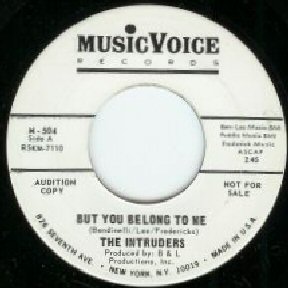
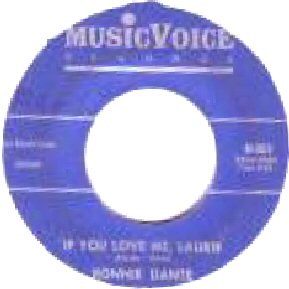 Two of United Artists' employees, A&R men/producers Art Talmadge and Harold "Pappy" Daily, bought
the remaining interest from United Artists. It is not clear whether Talmadge and Daily had been minority
stockholders from the start, as part of the United Artists shares, but they were nowhere to be seen in the
management or production before mid-1964. It is also unclear how much of Aaron Schroeder's stock
they bought, but by 1965 Art Talmadge became the controlling partner, as Musicor became "A Division
of Art Talmadge Productions," while Pappy Daily pretty much ran the label. The address of Musicor
Records changed from 1650 Broadway in New York City to 826 Seventh Avenue in New York, the
address of Art Talmadge Productions, Inc. Musicor became an independent label, doing their own
distribution (later the label moved to 240 West 55th Street). They also started a small singles label
called
MusicVoice, also located at 826 Seventh Avenue, and issued four singles in 1964. To get off the
"Gene-Pitney-only" idea, Musicor issued a series of albums featuring "51 songs," arranged into a
number of medleys. There was 51 Greatest Motion Picture Favorites [Musicor 2/3009], 51
Greatest Broadway Favorites [Musicor 2/3010], 51 Country Club Dance Favorites [Musicor
2/3011], 51 Organ Skating Favorites [Musicor 2/3012], 51 Belly Dancing Favorites
[Musicor 2/3021] and 51 Polka Favorites [Musicor 2/3024]. These albums of medleys were later
reissued on the MusicVoice label as budget items, with the same cover artwork, but part of the Musicor
number blanked out and a MusicVoice logo substituted (and reissued again later on Musicor's
MusicDisc/MusicO budget subsidiary).
Two of United Artists' employees, A&R men/producers Art Talmadge and Harold "Pappy" Daily, bought
the remaining interest from United Artists. It is not clear whether Talmadge and Daily had been minority
stockholders from the start, as part of the United Artists shares, but they were nowhere to be seen in the
management or production before mid-1964. It is also unclear how much of Aaron Schroeder's stock
they bought, but by 1965 Art Talmadge became the controlling partner, as Musicor became "A Division
of Art Talmadge Productions," while Pappy Daily pretty much ran the label. The address of Musicor
Records changed from 1650 Broadway in New York City to 826 Seventh Avenue in New York, the
address of Art Talmadge Productions, Inc. Musicor became an independent label, doing their own
distribution (later the label moved to 240 West 55th Street). They also started a small singles label
called
MusicVoice, also located at 826 Seventh Avenue, and issued four singles in 1964. To get off the
"Gene-Pitney-only" idea, Musicor issued a series of albums featuring "51 songs," arranged into a
number of medleys. There was 51 Greatest Motion Picture Favorites [Musicor 2/3009], 51
Greatest Broadway Favorites [Musicor 2/3010], 51 Country Club Dance Favorites [Musicor
2/3011], 51 Organ Skating Favorites [Musicor 2/3012], 51 Belly Dancing Favorites
[Musicor 2/3021] and 51 Polka Favorites [Musicor 2/3024]. These albums of medleys were later
reissued on the MusicVoice label as budget items, with the same cover artwork, but part of the Musicor
number blanked out and a MusicVoice logo substituted (and reissued again later on Musicor's
MusicDisc/MusicO budget subsidiary).
Then there were some "how to" albums, one on hula dancing [Musicor 2/3013, Hula at Home] and one on isometric exercise [Musicor 2/3014]. And after an Italian-language version of Gene Pitney's hits [Musicor 2/3015], Musicor started releasing Latin American dance albums, starting with Tito Rodriguez' Carnival of the Americas [Musicor 2/3018]. These became a major part of the future Musicor catalog.
Harold "Pappy" Daily and Jack Starnes had founded Starday Records in Texas in 1953, and while there, Daily took a young Texas-born country singer named George Jones under his wing. When Daily and his partners decided to split up in 1958, each retained part of the master tape catalog (Daily got the George Jones masters, among others), and Daily went to work for Mercury Records as a producer and head of country music A&R. George Jones followed him to Mercury. (The Starday label, without Daily, also entered into a distribution agreement with Mercury.) While at Mercury, Daily worked with Art Talmadge, who was doing A&R for Mercury's pop side. Both Talmadge and Daily moved over to United Artists Records around 1960. George Jones followed, as well as another country singer, Melba Montgomery. When Pappy Daily left United Artists to join Musicor in 1964, George Jones and Melba Montgomery again followed. It turned out to be a very good deal, indeed, for Musicor.
 George Jones became Musicor's second star. One of the first sessions set up by Pappy Daily was a joint
recording session for George Jones with Musicor's pop star, Gene Pitney. The single "I've Got Five
Dollars and It's Saturday Night" [Musicor 1066] went to #16 on the country charts and scraped the
bottom of the pop charts. Simultaneously, they released a new George Jones single, "Things Have
Gone
to Pieces" [Musicor 1067], which reached #9 on the country charts. A second George Jones/Gene Pitney
single, a remake of Rusty and Doug's "Louisiana Man" [Musicor 1097], made #25 on the country charts,
and a third duet, "Big Job" [Musicor 1115] reached #50. By 1966, a fourth Jones/Pitney disc ("That's
All It Took", Musicor 1165) made #47.
George Jones became Musicor's second star. One of the first sessions set up by Pappy Daily was a joint
recording session for George Jones with Musicor's pop star, Gene Pitney. The single "I've Got Five
Dollars and It's Saturday Night" [Musicor 1066] went to #16 on the country charts and scraped the
bottom of the pop charts. Simultaneously, they released a new George Jones single, "Things Have
Gone
to Pieces" [Musicor 1067], which reached #9 on the country charts. A second George Jones/Gene Pitney
single, a remake of Rusty and Doug's "Louisiana Man" [Musicor 1097], made #25 on the country charts,
and a third duet, "Big Job" [Musicor 1115] reached #50. By 1966, a fourth Jones/Pitney disc ("That's
All It Took", Musicor 1165) made #47.
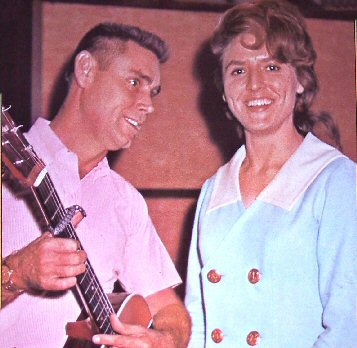 Meanwhile, Jones posted a slew of country hits on his own, including "Love Bug" (#6), "Take Me" (#8),
"I'm a People" (#6), "Old Brush Arbors" (#30), "Four-O-Thirty Three" (#5), "Walk Through This World
With Me" (#1), "I Can't Get There from Here" (#5), "If My Heart Had Windows" (#7), "Say It's Not You"
(#8), "Small Time Laboring Man" (#35), "As Long As I Live" (#3), "When the Grass Grows Over Me" (#2),
"I'll Share My World with You" (#2), "If Not for You" (#6), "She's Mine" (#6), "Where Grass Won't Grow"
(#28), "A Good Year for the Roses" (#2), "Sometimes You Just Can't Win" (#10), "Right Won't Touch a
Hand" (#7), and "I'll Follow You (To Our Cloud)" (#13). He also teamed with other singers for additional
hits. With Melba Montgomery, he charted with "Close Together (As You and Me)" (#70) and "Party
Pickin'" (#24), while he hit #12 with "Milwaukee Here I Come" with Brenda Carter. He also recorded with
the Jones Boys, who included Johnny Paycheck, and charted with "Tell Me My Lying Eyes Are Wrong"
(#13).
Meanwhile, Jones posted a slew of country hits on his own, including "Love Bug" (#6), "Take Me" (#8),
"I'm a People" (#6), "Old Brush Arbors" (#30), "Four-O-Thirty Three" (#5), "Walk Through This World
With Me" (#1), "I Can't Get There from Here" (#5), "If My Heart Had Windows" (#7), "Say It's Not You"
(#8), "Small Time Laboring Man" (#35), "As Long As I Live" (#3), "When the Grass Grows Over Me" (#2),
"I'll Share My World with You" (#2), "If Not for You" (#6), "She's Mine" (#6), "Where Grass Won't Grow"
(#28), "A Good Year for the Roses" (#2), "Sometimes You Just Can't Win" (#10), "Right Won't Touch a
Hand" (#7), and "I'll Follow You (To Our Cloud)" (#13). He also teamed with other singers for additional
hits. With Melba Montgomery, he charted with "Close Together (As You and Me)" (#70) and "Party
Pickin'" (#24), while he hit #12 with "Milwaukee Here I Come" with Brenda Carter. He also recorded with
the Jones Boys, who included Johnny Paycheck, and charted with "Tell Me My Lying Eyes Are Wrong"
(#13).
In 1969, George Jones married country star Tammy Wynette, who was signed to Epic Records. Jones wanted to record with his wife, but as they were on different labels, this proved infeasible. In 1971, he left Musicor and signed with Epic Records, his wife's label, and they had several hits singing as a duet, as well as Jones himself putting over 60 singles on the country charts for Epic between 1972 and 1989. The loss of George Jones was a huge blow to Musicor and Pappy Daily. At about the same time, Gene Pitney stopped recording. This one-two punch sent Musicor reeling.
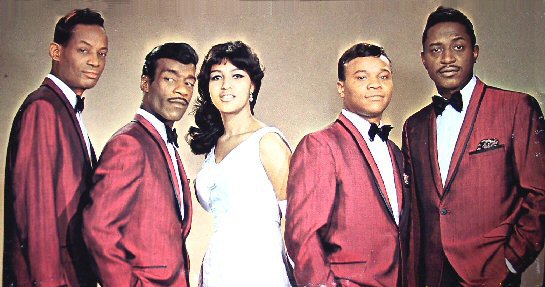 There were other artists on Musicor, but nothing of the magnitude of either Pitney or Jones. The Platters
signed with Musicor in 1966, long after their heyday with Mercury, probably due to the connection with
Art Talmadge. Several of their original members had left, including Tony Williams, the voice
of their biggest hits. Still, they were a competent soul vocal group and placed five songs on the national
pop charts for Musicor, the biggest being "With This Ring" [Musicor 1229], which reached #14. By the
time they recorded for Musicor, the group consisted of lead singer Sonny Turner, Nate Nelson, Sandra
Dawn, David Lynch, and Herb Reed, the latter two being original members from the Mercury hit days.
They also re-recorded many of their greatest Mercury hits for Musicor, but without Tony Williams, it just
wasn't the same. That didn't stop Musicor from forever peddling these remakes as if they were the
original hits, though.
There were other artists on Musicor, but nothing of the magnitude of either Pitney or Jones. The Platters
signed with Musicor in 1966, long after their heyday with Mercury, probably due to the connection with
Art Talmadge. Several of their original members had left, including Tony Williams, the voice
of their biggest hits. Still, they were a competent soul vocal group and placed five songs on the national
pop charts for Musicor, the biggest being "With This Ring" [Musicor 1229], which reached #14. By the
time they recorded for Musicor, the group consisted of lead singer Sonny Turner, Nate Nelson, Sandra
Dawn, David Lynch, and Herb Reed, the latter two being original members from the Mercury hit days.
They also re-recorded many of their greatest Mercury hits for Musicor, but without Tony Williams, it just
wasn't the same. That didn't stop Musicor from forever peddling these remakes as if they were the
original hits, though.
Melba Montgomery had several country chart records as a solo artist, and teamed with Gene Pitney for "Baby Ain't That Fine" [Musicor 1135], which reached #15 on the country charts in 1966. Judy Lynn, another country artist who came over from United Artists, recorded several albums and singles for Musicor, but they failed to chart. In 1970, a studio group called the Street People had a couple of songs make the pop charts ("Jennifer Tomkins," Musicor 1365, made #36, and "Thank You Girl," Musicor 1401, made #96). The group included Rupert Holmes, who would gain far better recognition as a solo artist in the late 1970s with his #1 record "Escape (The Pina Colada Song)" [Infinity 50,035] and others. Synthesizer artist Stan Free, recording as "Hot Butter," also had a top 10 record with "Popcorn" [Musicor 1458], which reached #9 in 1972. But by the end of 1972, Musicor was in sad shape, reduced to issuing mostly compilations of "Golden Hits" or various artist compilations from days gone by.
According to Billboard, as reported in Country Music People, following George Jones' departure to Epic in 1971, Pappy Daily sold his share in Musicor to Art Talmadge and retired to his other interests in Texas. Jones had already given up his shares in Musicor to Talmadge, as well as his future royalties, to get out of his contract and join Epic. Art Talmadge leased the George Jones session tapes — containing 230 issued and 58 unreleased masters — to RCA in late 1971. RCA re- mixed them and issued 18 albums in four years from 1972 to 1975. RCA actually had a couple of chart singles with the songs ("A Day in the Life of a Fool" [RCA 0625, #30] and "Wrapped Around Her Finger" [RCA 0792, #46]).
In 1975, the rights reverted to Talmadge. He got the RCA artwork and LP pressing masters and reissued most of the RCA albums on Musicor, in a batch of consecutive catalogue numbers, with a Musicor panel stuck over the RCA logo on the artwork. He released them through Springboard Records, as Musicor itself had closed down by then. Talmadge sold off the Musicor master tapes piecemeal, some to Gusto, some to others, which explains why Bear Family of Germany couldn't locate all the George Jones master session tapes when preparing their two brand new box sets of his entire Musicor recordings. They eventually had to use vinyl records for a few titles.
By 1976, it was basically over. Talmadge sold the label to Springboard International, who spent a couple of years reissuing more compilations. Springboard itself went through several ownership hands (including for a time Columbia Special Products in Canada), eventually being subsumed by Gusto Records, who has reissued several CDs on the Musicor/King label.
 The Musicor Records Story
The Musicor Records Story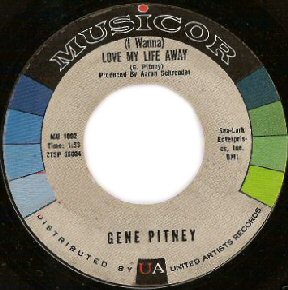

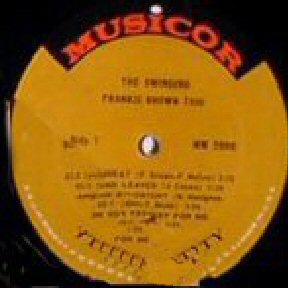

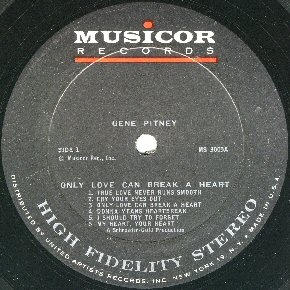
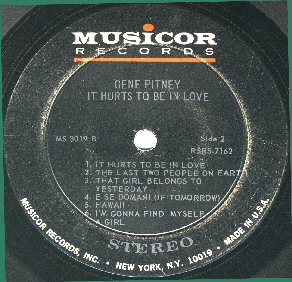
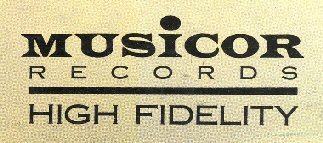
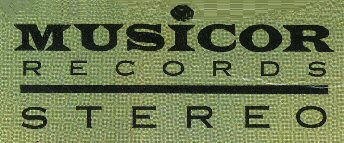

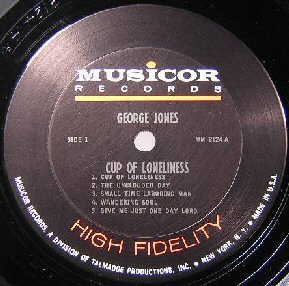
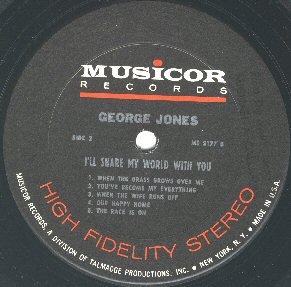
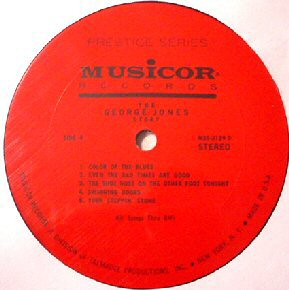

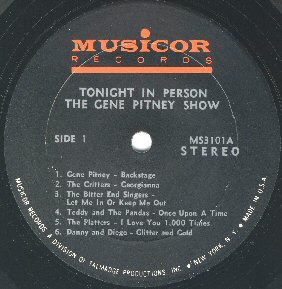


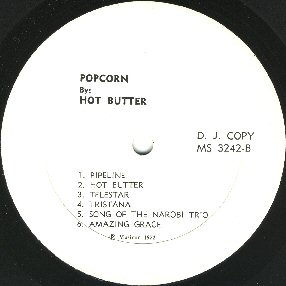
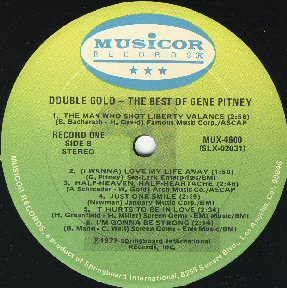

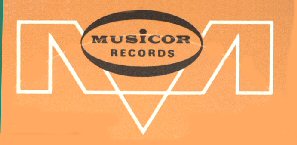 On to the Musicor Album Discography, Part 3 Main Series
MS 3200-3275 (1970-1975)
On to the Musicor Album Discography, Part 3 Main Series
MS 3200-3275 (1970-1975)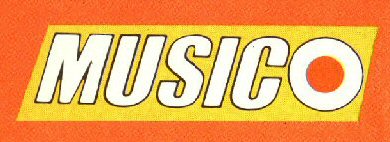 On to the Musicor Album Discography, Part 6 Budget Subsidiaries:
MusicVoice, Music Disc/MusicO
On to the Musicor Album Discography, Part 6 Budget Subsidiaries:
MusicVoice, Music Disc/MusicO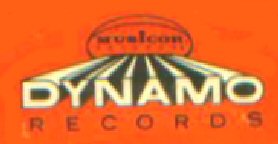 On to the Dynamo Album Discography Musicor R&B
Subsidiary
On to the Dynamo Album Discography Musicor R&B
Subsidiary Back to the Discography Listings Page
Back to the Discography Listings Page